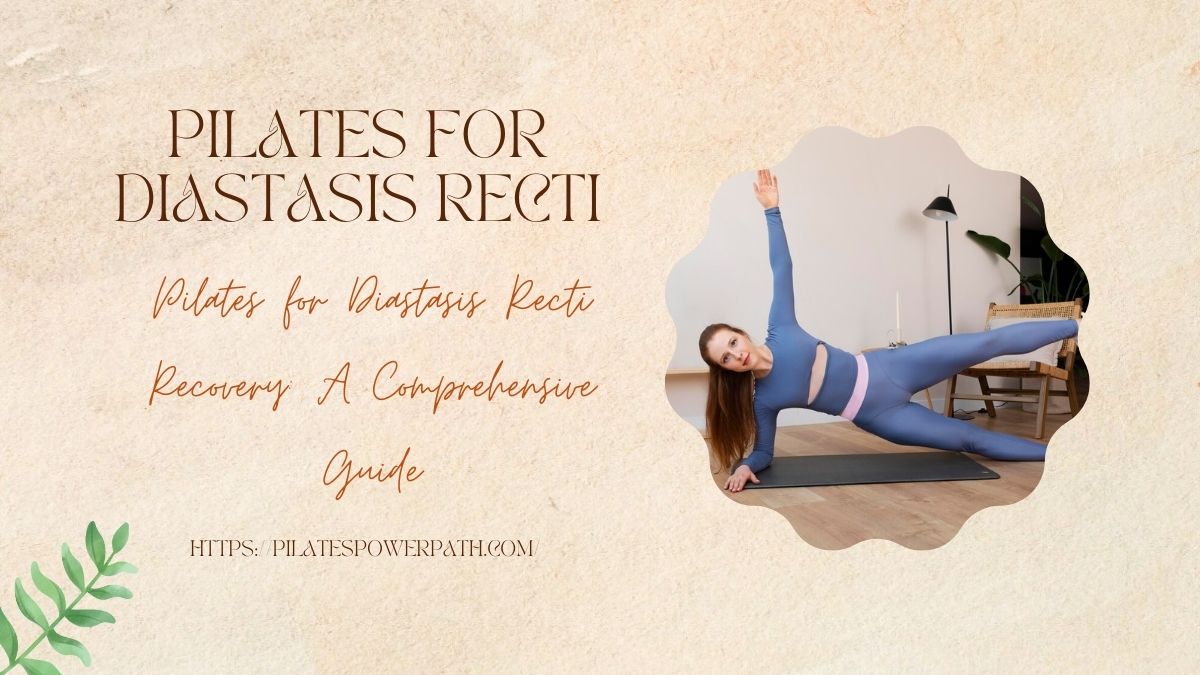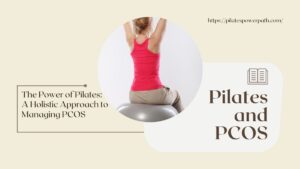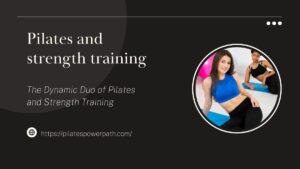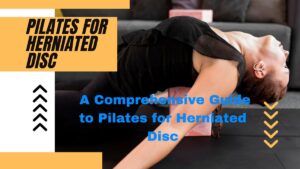Pilates for Diastasis Recti (DR) is a condition often experienced during or after pregnancy, where the two sides of the rectus abdominis muscle separate, creating a gap. Although not exclusive to pregnant women, DR is more prevalent among this demographic due to the strain and pressure exerted on the abdominal wall during pregnancy. Symptoms of DR can include lower back pain, poor posture, and a protruding belly. However, it’s important to note that these symptoms can vary among individuals.
Targeted exercises, such as Pilates, play a critical role in healing Diastasis Recti. Pilates is a body conditioning routine that seeks to build flexibility, muscle strength, and endurance in the legs, abdominals, arms, hips, and back. The focus on core strength and stability makes Pilates a potentially effective method for managing and recovering from DR. Regularly incorporating Pilates into your workout routine can gradually bring the muscles back together, reducing the gap, alleviating associated symptoms, and improving overall body strength and fitness.
Understanding Diastasis Recti
Causes of Diastasis Recti
Diastasis Recti is primarily caused due to excessive intra-abdominal pressure. For pregnant women, this pressure is generated by the expanding uterus as the baby grows. However, any condition or activity that puts undue stress on the abdominal wall, such as weight lifting, obesity, or even chronic constipation, can lead to DR. It is also worth noting that while it is more prevalent among women, men can also develop DR, often as a result of improper exercise techniques or obesity.
Identifying Signs and Symptoms
The main sign of Diastasis Recti is a noticeable bulge or “pooch” in your stomach, especially when your ab muscles are tense. Other symptoms can include back pain, poor posture, constipation, and bloating. It’s important to consult a healthcare professional or physical therapist for an accurate diagnosis, as the condition is often overlooked or misdiagnosed.
How DR Affects Different Demographics
While DR is most commonly associated with postpartum women, it can affect anyone – including men and those who have never been pregnant. In men, DR is usually caused by obesity or yoyo dieting, while in non-pregnant women, it can be the result of performing strenuous exercises without adequate core strength. Despite these differences, the treatment remains the same across demographics – targeted exercises that focus on strengthening the core muscles.
Read More: Unleashing Glute Strength with Pilates: A Comprehensive Guide
The Role of Pilates in Diastasis Recti Recovery
Explanation of how Pilates can help with DR
Pilates can play a significant role in the recovery from Diastasis Recti owing to its focus on slow, controlled movements and core stability. This modality of exercise encourages the engagement of the transverse abdominis – the deepest layer of abdominal muscles – which are crucial in the healing process of DR.
Benefits of Pilates exercises for strengthening core muscles
Pilates exercises offer multiple benefits, especially in the context of strengthening core muscles. These benefits include improved posture, enhanced flexibility, and increased muscle tone and strength, particularly in the abdominal muscles. Pilates exercises, such as the ‘hundred,’ ‘rolling like a ball,’ and ‘criss-cross,’ can contribute to the strengthening and healing of the separated abdominal muscles.
Emphasis on gentle and effective movements for DR recovery
When it comes to DR recovery, the focus of Pilates is on gentle and effective movements that avoid putting strain on the midline of the abdomen. It is recommended to work with a certified Pilates instructor who understands the nuances of DR and can guide you through modifications, ensuring exercises are performed safely and efficiently. Over time, the consistent practice of Pilates can help reduce the gap caused by DR, alleviate associated discomforts, and reinforce the overall integrity of the abdominal wall.
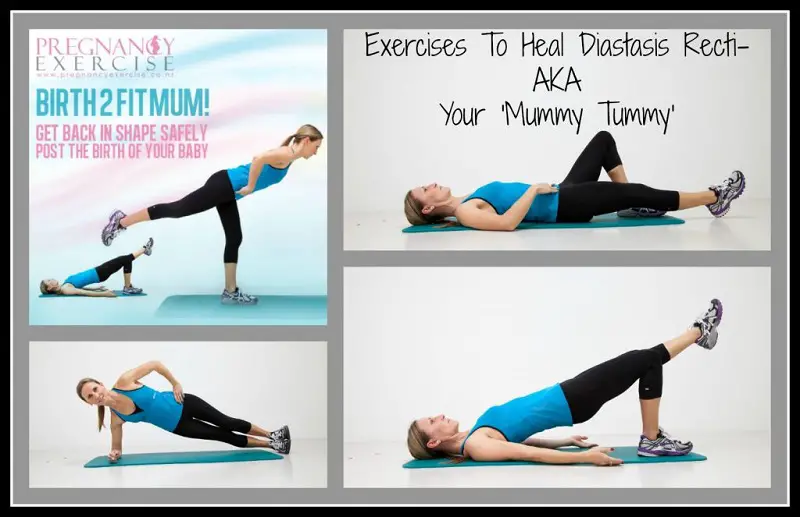
Pilates Exercises for Diastasis Recti
Breathing Techniques to Engage Core Muscles
Proper breathing techniques are foundational to Pilates and are particularly beneficial for people with Diastasis Recti. These deep breathing exercises, often referred to as ‘Pilates breath,’ involve inhaling deeply through the nose and exhaling fully through the mouth, all while keeping the abdominal muscles engaged. This practice helps increase awareness of the core muscles, reduce intra-abdominal pressure, and contribute to the healing of DR.
Foundational Pilates Exercises for DR
- Pelvic Tilts and Gentle Pelvic Floor Exercises
Pelvic tilts and gentle pelvic floor exercises are excellent starting points for those with Diastasis Recti. Pelvic tilts help engage and strengthen the transverse abdominis and pelvic floor muscles, both vital for DR recovery. To perform a pelvic tilt, lie on your back with your knees bent, and feet flat on the floor, and breathe out as you gently tilt your pelvis and flatten your back against the floor.
- Modified Abdominal Exercises
Modified abdominal exercises such as heel slides and leg slides can be very effective in gently strengthening the core without putting pressure on the abdominal separation. Heel slides involve lying on your back with your knees bent, then slowly sliding one heel away from your body while keeping your lower back and pelvis stable.
- Bridging Exercises for Core Activation
Bridging exercises are another important component of a DR recovery Pilates routine. They not only enhance core stability but also strengthen the glutes and hamstrings. Starting in the same position as the pelvic tilt, lift your hips and torso off the ground (except your shoulders), hold for a few seconds, then slowly lower back down. Remember to keep the movement slow and controlled, ensuring your core remains engaged throughout the exercise.
Precautions and Tips for Diastasis Recti Recovery
When to start Pilates after childbirth or surgery
Before starting a Pilates regimen or any form of exercise postpartum or post-surgery, it is crucial to consult a healthcare professional or physical therapist. They will be able to assess your physical condition and provide guidance on when it is safe to begin exercising. The recommended waiting period varies, but generally, one can start gentle exercises like pelvic tilts and deep breathing six weeks postpartum or post-surgery.
Consultation with healthcare professionals before starting exercises
It’s essential to understand your limitations and avoid any exercises that exacerbate DR. Notably, movements that involve twisting the torso or extreme bending can put strain on the midline and should be avoided until the DR has healed. It’s also advisable to avoid any exercises that cause the belly to “dome” or protrude, as this could indicate that the intra-abdominal pressure is too high.

Understanding limitations and avoiding exacerbation of DR
Finally, remember that recovery from Diastasis Recti takes time, patience, and consistency. Individuals should listen to their bodies and progress at their own pace. As strength and control over the abdominal muscles improve, the intensity and variety of exercises can gradually be increased. With time, diligence, and proper guidance, Pilates can be a key facilitator in the journey toward healing and recovery from Diastasis Recti.
Lifestyle Changes for Enhanced Healing
Making lifestyle adjustments can significantly complement your Pilates routine and speed up the healing process from Diastasis Recti. Here are a few key areas to focus on:
Importance of Posture Correction in Daily Activities
Correct posture plays a vital role in DR recovery, as it helps in maintaining alignment and reducing strain on the midline. It is crucial to focus on maintaining a neutral spine when sitting, standing, or performing daily activities. Be conscious of your body alignment when lifting heavy objects or your baby, ensuring your movements are controlled and your core engaged.
Nutrition and Hydration Tips for Aiding Recovery
A balanced diet and proper hydration are essential for muscle repair and recovery. Consuming a diet rich in proteins, essential fats, and micronutrients can aid in the healing of the abdominal muscles. Hydration aids in maintaining skin elasticity and muscle flexibility, both crucial for Diastasis Recti recovery.
Stress Management and Its Impact on DR Healing
Chronic stress can exacerbate Diastasis Recti as it may lead to holding tension in your core muscles, which can put additional pressure on your abdominal separation. Practices such as meditation, deep breathing, yoga, and ensuring adequate sleep can help in managing stress levels, thus aiding in the healing process.
Success Stories and Testimonials
Numerous individuals have leveraged the power of Pilates to aid their recovery from Diastasis Recti, and their experiences serve as inspiration for others on similar journeys.
Real-life Experiences of Individuals Who Used Pilates for DR Recovery
Amy, a mother of three, experienced significant Diastasis Recti after her last pregnancy. Feeling disheartened by her physical condition, she sought the guidance of a Pilates instructor specializing in DR recovery. She started with basic exercises, gradually adding more challenging movements as her strength increased. After six months of consistent practice, Amy saw visible improvements in her condition. She feels stronger, and more in control of her body, and her DR has significantly reduced.
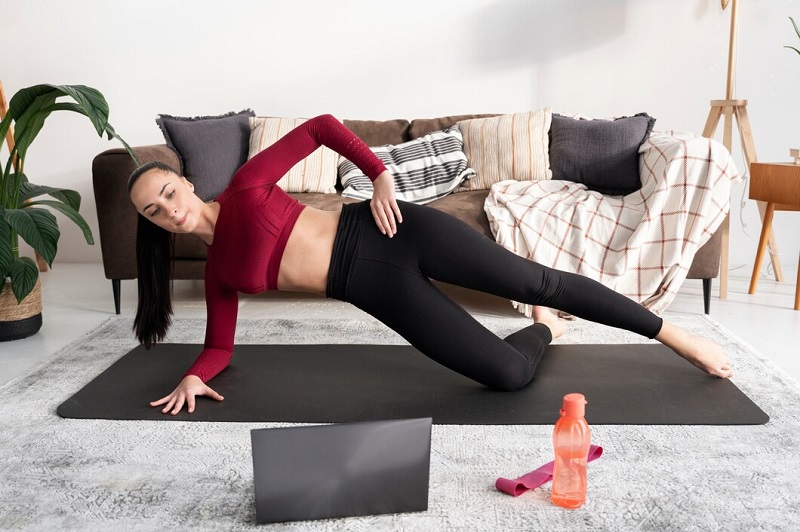
How Consistency and Dedication Influenced Their Journey
John, a middle-aged man, developed Diastasis Recti due to obesity. He started a Pilates regimen and made drastic changes to his diet. In John’s case, consistency and dedication played a pivotal role in his recovery. He made Pilates a part of his daily routine, slowly but steadily increasing the intensity of his workouts. After a year of persistent effort, his DR had almost completely healed, and he enjoyed a much healthier and more active lifestyle. These success stories underscore the importance of commitment and patience in the healing process.
Expert Insights and Additional Resources
Expert Insights on Diastasis Recti Recovery
Experts in the field of Pilates and physical therapy emphasize the importance of a holistic approach to Diastasis Recti recovery. According to Sarah Duvall, a physical therapist specializing in DR recovery, “The key is not just to focus on the gap, but also on the tension and functionality of the linea alba.” She further stresses the need for a comprehensive approach that includes exercises, nutrition, stress management, and lifestyle changes.
Conclusion
In conclusion, Pilates presents a powerful tool for recovery from Diastasis Recti, providing a balanced, low-impact approach to rebuilding core strength and functionality. However, it’s critical to remember that recovery is a journey with its unique timeline—patience, persistence, and consistency are your allies in this process. It’s not just about narrowing the gap; it’s about regaining control over your body and enhancing your overall health.
Moreover, it’s important to be proactive in your healing journey. Reach out to certified professionals, join supportive communities, and leverage the abundance of resources at your disposal. Remember, every small step counts towards your recovery, and each day brings you closer to your goal. Always consult with a healthcare professional before embarking on any exercise program.
Finally, we cannot overstate the importance of patience and consistency in the recovery process. Healing takes time, and progress might be slow, but with consistent effort, the results will come. Embrace the journey, celebrate small victories, and never lose sight of your health goals.
Frequently Asked Questions
Diastasis Recti (DR) is a condition where the right and left sides of the rectus abdominis (your ‘six-pack’ muscles) separate, leaving a gap. DR can occur due to pregnancy, obesity, improper exercise techniques, or even genetics.
Yes, Pilates can be a highly effective method for DR recovery. The exercises in Pilates focus on strengthening the core and improving posture, which can help reduce the strain on the abdominal muscles and aid in recovery. However, it’s vital to perform these exercises under the supervision of a certified instructor to ensure proper form and prevent further damage.
The time frame varies from person to person and depends on factors such as the severity of the condition, consistency in exercise, dietary habits, and stress management techniques. Some may start to see improvements in a few months, while for others, it may take a year or more. Remember, recovery is a journey, and patience is key.

